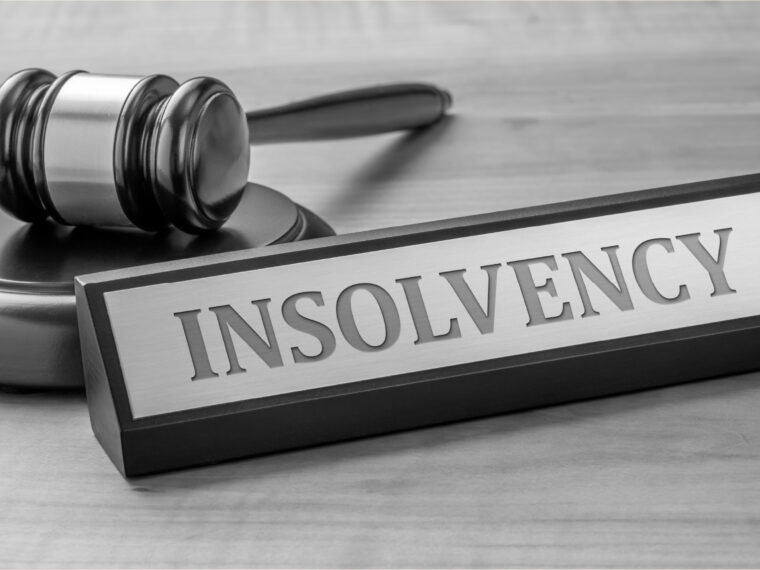Insolvency law is a critical area of legal practice that governs the financial distress of both companies and individuals. Understanding the intricacies of insolvency law is essential for anyone involved in business or personal finance, as it outlines the processes and implications of being unable to meet financial obligations. This article delves into the various aspects of insolvency law, its significance, and the consequences it holds for both entities and individuals.
Understanding Insolvency
Insolvency law occurs when an individual or organisation cannot pay their debts as they fall due. This state can arise from various factors, including poor financial management, economic downturns, or unexpected expenses. It is crucial to distinguish between insolvency and bankruptcy, as the former is a financial state, while the latter is a legal process that can follow insolvency.
In Australia, insolvency is governed by the Corporations Act 2001 for companies and the Bankruptcy Act 1966 for individuals. These laws provide a framework for dealing with insolvency, ensuring that creditors are treated fairly while also allowing for the possibility of recovery for the insolvent party.
Types of Insolvency
There are generally two types of insolvency: cash flow insolvency and balance sheet insolvency. Cash flow insolvency occurs when a company or individual cannot pay their debts as they become due, even if their assets exceed their liabilities. Conversely, balance sheet insolvency happens when total liabilities exceed total assets, indicating a more severe financial position.
Understanding these distinctions is vital, as they can influence the course of action taken by the insolvent party and their creditors. For instance, a company that is cash flow insolvent may still have options for restructuring, while a balance sheet insolvent entity may face liquidation.
Insolvency Processes for Companies
When a company faces insolvency, several processes may be initiated, each with its own implications and outcomes. The primary options include voluntary administration, liquidation, and receivership. Each of these processes serves different purposes and can significantly affect stakeholders.
Voluntary Administration
Voluntary administration is a process where a company’s directors appoint an administrator to manage the company’s affairs. The primary aim is to maximise the chances of the company continuing its business or achieving a better return for creditors than immediate liquidation would provide. This process allows the company to pause its debts while a plan is formulated.
During this time, the administrator assesses the company’s financial situation and prepares a report for creditors, outlining the options available. Creditors then vote on whether to accept the proposed plan, which may involve restructuring the company’s debts or, in some cases, entering into a deed of company arrangement.
Liquidation
Liquidation is the process of winding up a company’s affairs, whereby its assets are sold off to pay creditors. This process can be initiated voluntarily by the company’s directors or involuntarily through a court order. In either case, a liquidator is appointed to oversee the sale of assets and distribution of proceeds to creditors.
There are two main types of liquidation: members’ voluntary liquidation (for solvent companies) and creditors’ voluntary liquidation (for insolvent companies). The latter is particularly significant, as it often leads to the complete dissolution of the company and the cessation of its business operations.
Receivership
Receivership occurs when a secured creditor appoints a receiver to take control of the company’s assets to recover the debt owed to them. This process is typically initiated when a company defaults on a loan or other financial obligation. The receiver’s primary duty is to act in the best interests of the secured creditor, which may not always align with the interests of other creditors or the company itself.
While receivership can provide a means for creditors to recover debts, it can also lead to the company’s demise if the receiver determines that the business is not viable. This process highlights the importance of understanding the rights and obligations of both creditors and the company during insolvency proceedings.
Insolvency Processes for Individuals
For individuals facing insolvency, the primary legal process is bankruptcy. This process provides a way for individuals to have their debts discharged, allowing them a fresh start financially. However, it comes with significant consequences and restrictions that individuals must consider.
Bankruptcy
Bankruptcy is a legal status that occurs when an individual cannot repay their debts. In Australia, individuals can voluntarily declare bankruptcy or be declared bankrupt by a creditor through a court order. The process involves the appointment of a trustee who manages the individual’s financial affairs, including the sale of assets to pay creditors.
While bankruptcy can relieve individuals of overwhelming debt, it also has long-lasting effects on their credit rating and financial future. Bankrupt individuals may face restrictions on obtaining credit, travelling overseas, and holding certain professional positions. Understanding these implications is crucial for anyone considering bankruptcy as a solution to their financial difficulties.
Alternatives to Bankruptcy
Before declaring bankruptcy, individuals may explore alternatives such as debt agreements or personal insolvency agreements. A debt agreement is a legally binding arrangement between the debtor and creditors to pay back a portion of the debt over time, while a personal insolvency agreement allows for a negotiated settlement of debts, often involving a lump sum payment.

These alternatives can provide a more favourable outcome for individuals, allowing them to avoid the severe consequences of bankruptcy while still addressing their financial obligations. Seeking professional advice is essential to determine the best course of action based on individual circumstances.
The Role of Insolvency Practitioners
Insolvency practitioners play a vital role in the insolvency process, acting as intermediaries between the insolvent party and creditors. These professionals are typically licensed and have extensive knowledge of insolvency law and procedures.
Types of Insolvency Practitioners
There are several types of insolvency practitioners, including liquidators, administrators, and trustees. Each type has specific responsibilities and functions within the insolvency process. For example, liquidators focus on winding up a company’s affairs, while administrators aim to restructure and save the business.
Choosing the right insolvency practitioner is crucial, as their expertise can significantly impact the outcome of the insolvency process. Individuals and companies should seek practitioners with a proven track record and relevant experience in their specific situation.
Choosing an Insolvency Practitioner
When selecting an insolvency practitioner, it is essential to consider their qualifications, experience, and approach to handling insolvency cases. Potential clients should conduct thorough research, including checking their licensing status and any past disciplinary actions.
Additionally, seeking recommendations from trusted sources or professional organisations can help ensure that individuals and companies find a reputable practitioner who can effectively navigate the complexities of insolvency law.
Implications of Insolvency
The implications of insolvency extend beyond financial distress, affecting various aspects of an individual’s or company’s operations. Understanding these implications is crucial for making informed decisions during challenging financial times.
Impact on Credit Rating
One of the most significant consequences of insolvency is its impact on credit ratings. For individuals, bankruptcy can remain on their credit report for up to seven years, making it challenging to secure loans or credit in the future. Similarly, companies facing insolvency may find it difficult to obtain financing or attract investors post-insolvency.
Maintaining a good credit rating is essential for both individuals and companies, as it can affect future financial opportunities. Therefore, it is crucial to consider the long-term implications of insolvency when exploring options for addressing financial difficulties.
Legal Consequences
Insolvency can also lead to various legal consequences, including potential litigation from creditors seeking to recover debts. In some cases, directors of insolvent companies may face personal liability for debts incurred during insolvency, particularly if they are found to have engaged in wrongful trading or other misconduct.
Understanding the legal ramifications of insolvency is essential for both individuals and companies, as it can influence the decisions made during the insolvency process. Seeking legal advice can help navigate these complexities and mitigate potential risks.

Conclusion
Insolvency law is a complex and multifaceted area that affects both companies and individuals facing financial distress. Understanding the processes, implications, and available options is crucial for navigating insolvency effectively. Whether through voluntary administration, liquidation, or bankruptcy, the choices made during insolvency can have lasting effects on financial futures.
Engaging with qualified insolvency practitioners and seeking professional advice can provide valuable guidance, ensuring that individuals and companies make informed decisions during challenging financial times. Ultimately, understanding insolvency law empowers parties to take proactive steps towards financial recovery and stability.
See Also: How to choose the best Insolvency Lawyers for your business.


